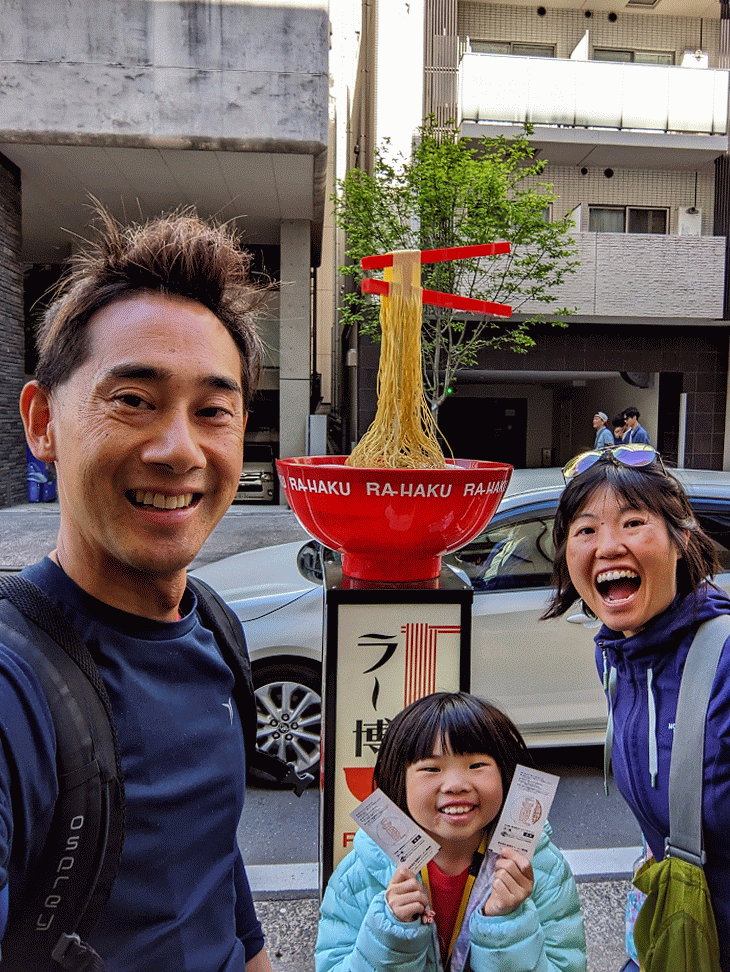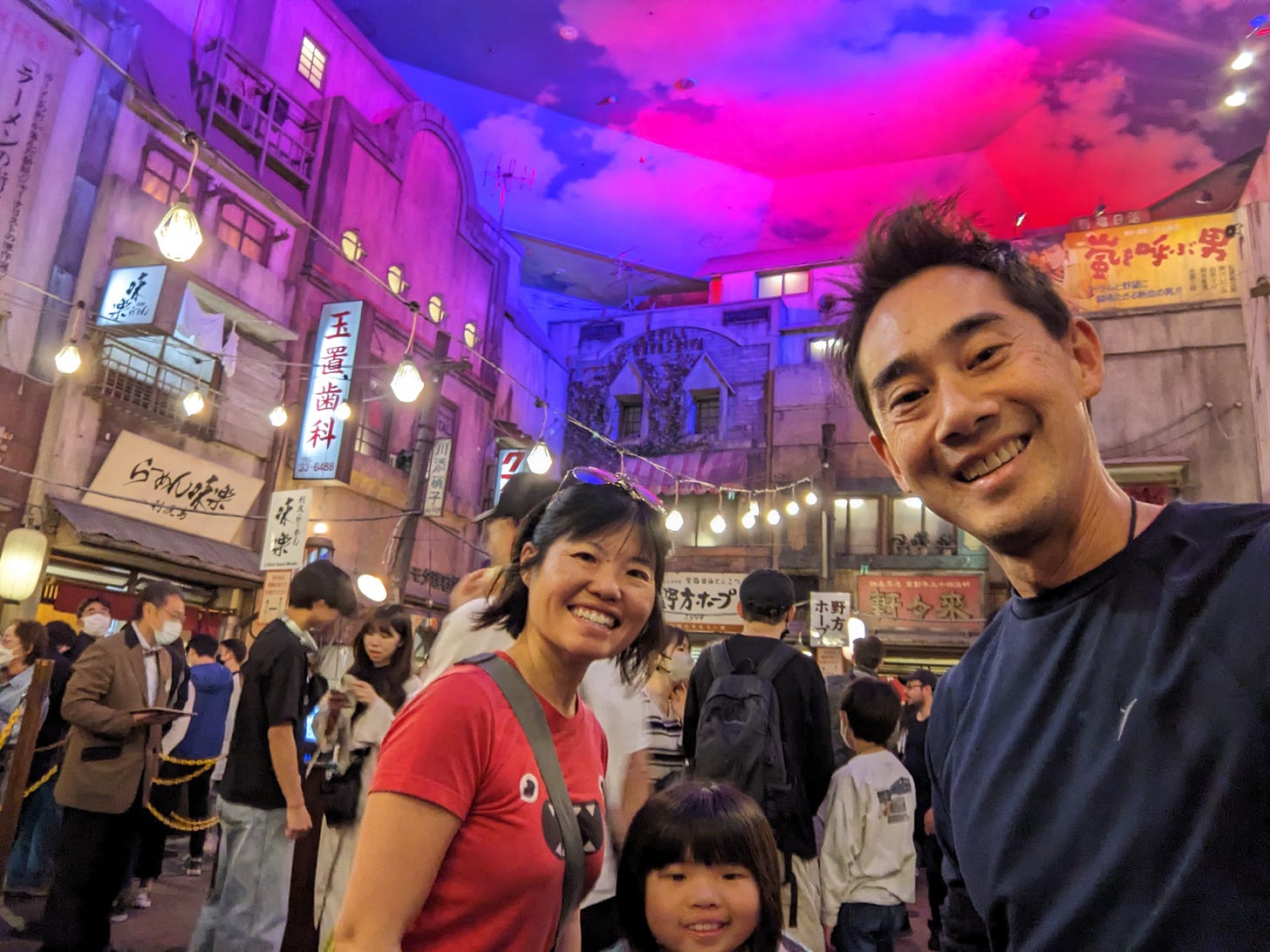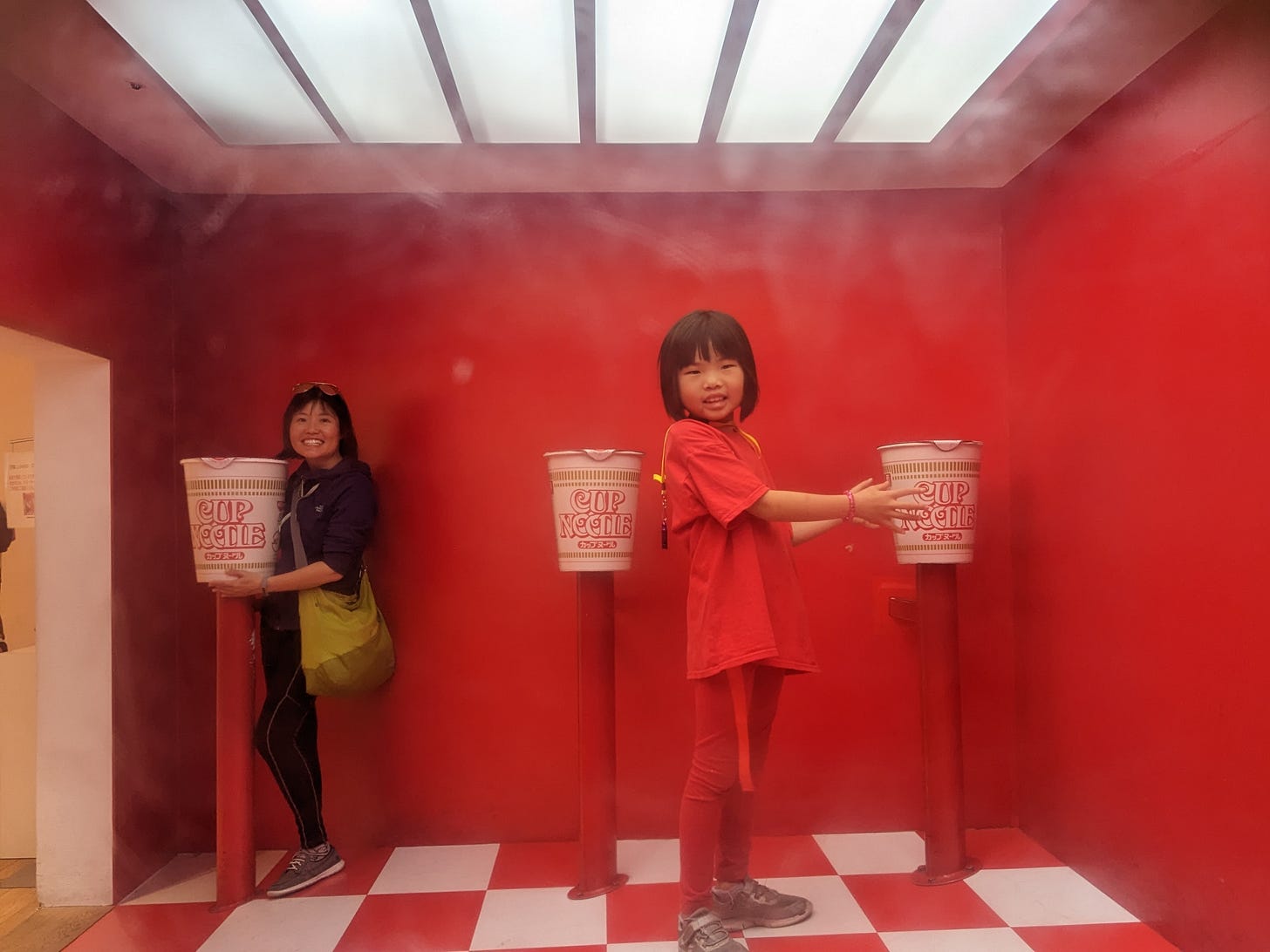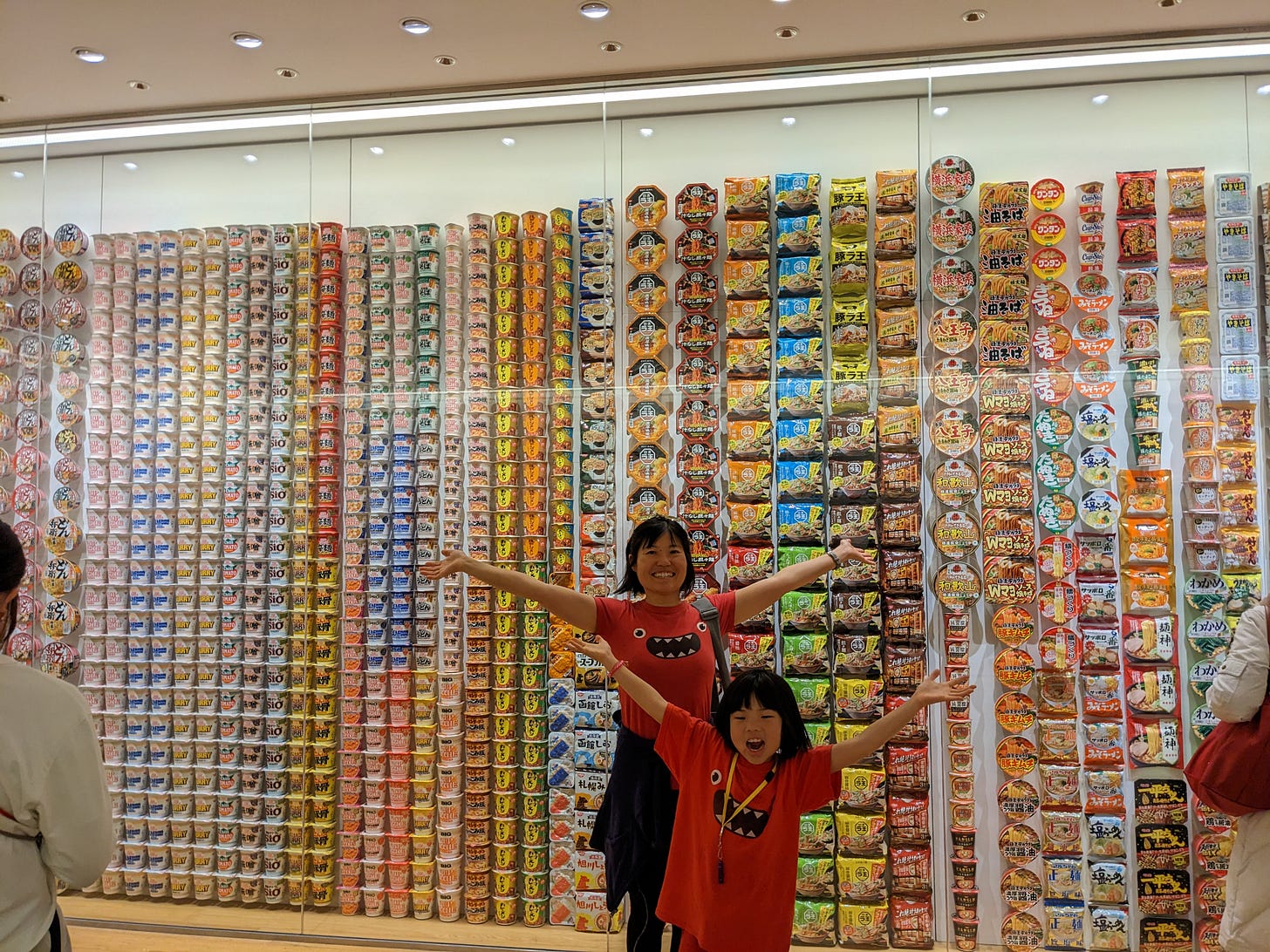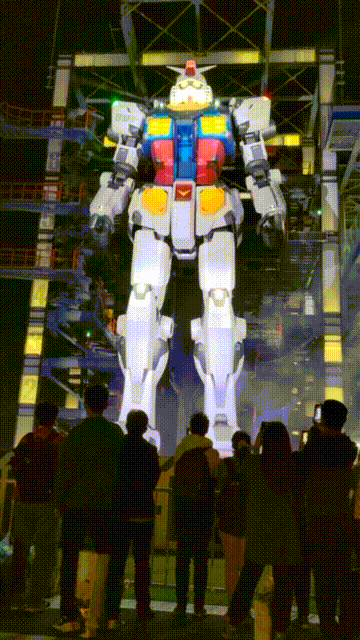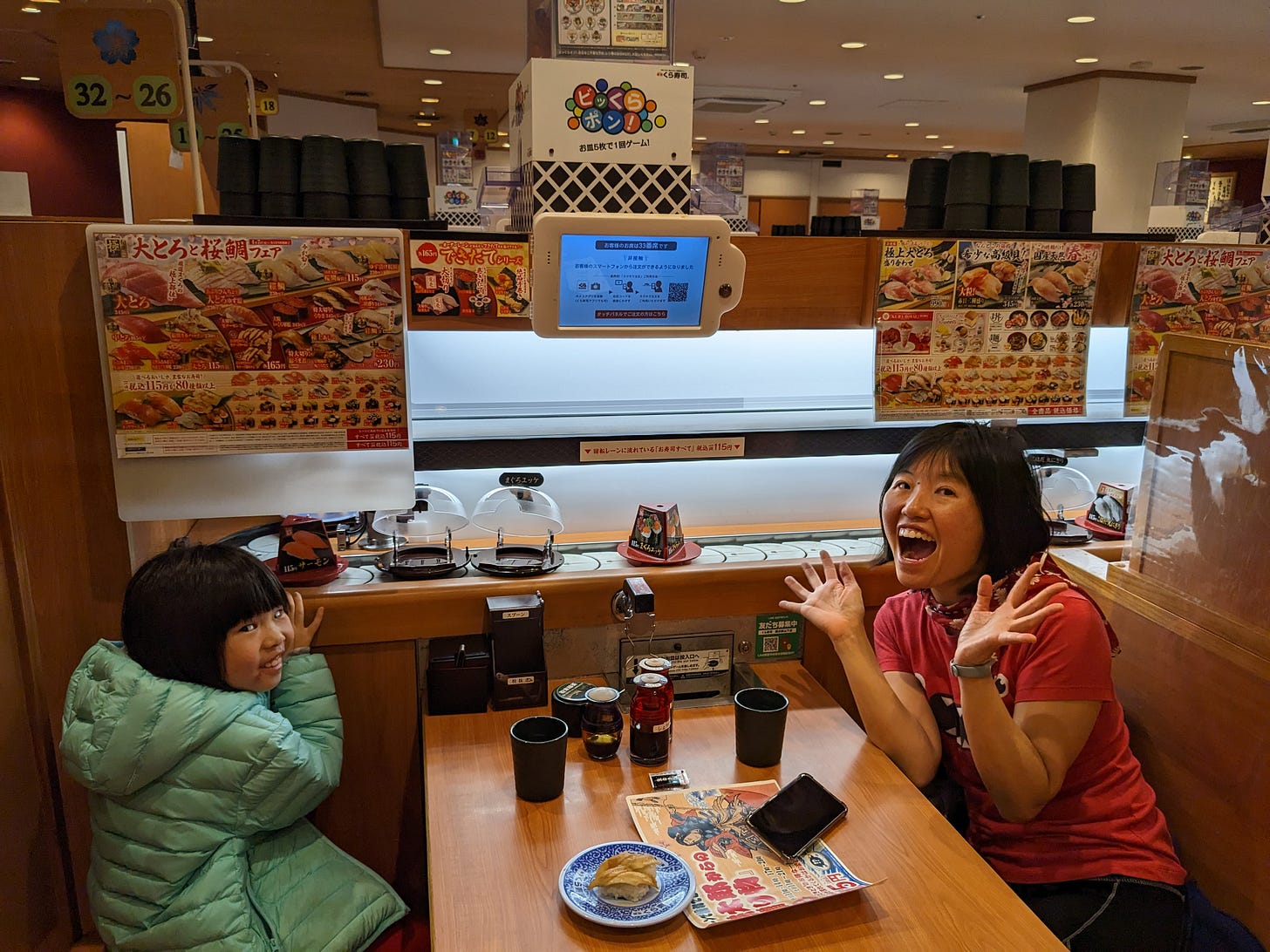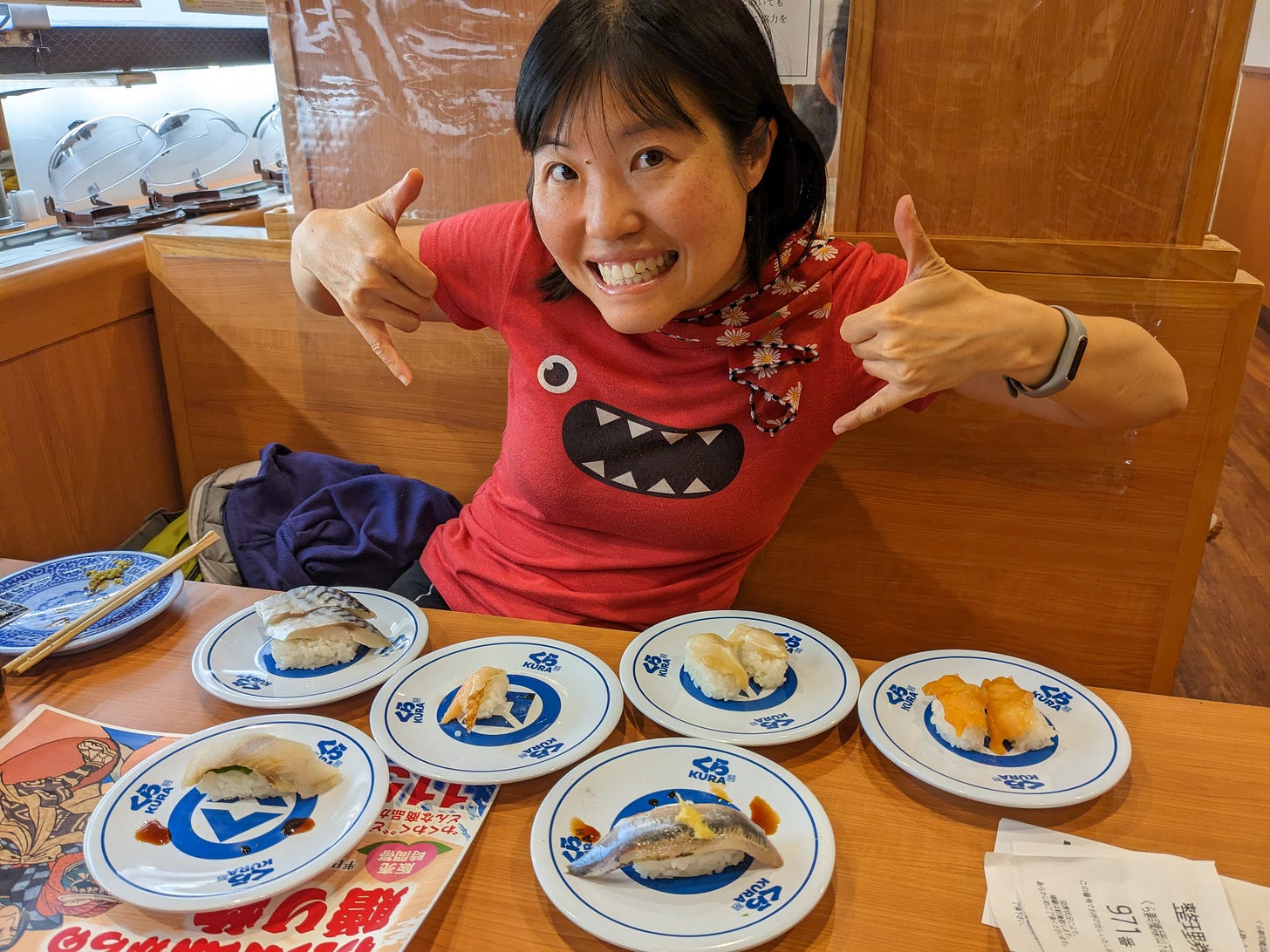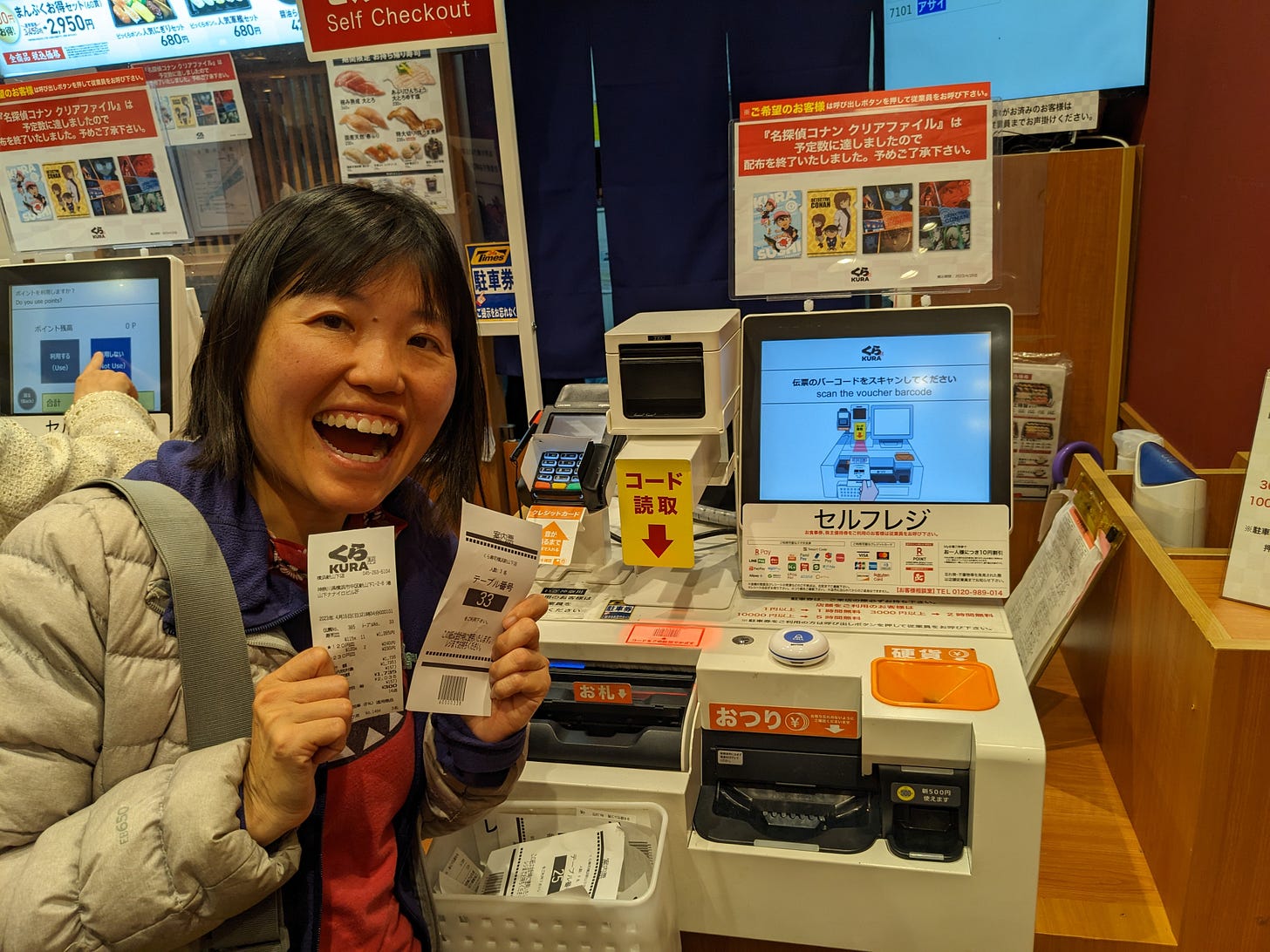Yokohama
How much can we eat in one day?
We arrived in Yokohama and immediately went to the Shin-Yokohama Ramen Museum for launch. Luckily they very nicely stored our luggage for us. We went down to the basement where they have ten or so famous ramen shops set in a recreation of Yokohama back in the 1950’s during twilight. And appropriately, every ramen place had a line that was over an hour long. Luckily there were some that you could take a number, so we went upstairs to explore the exhibits.
We learned a LOT about ramen, its Chinese origins, and the many different regional kinds of ramen throughout Japan. Ramen really spread throughout Japan when an earthquake destroyed much of Tokyo, forcing many ramen chefs to spread throughout Japan looking for new places to live and cook ramen.
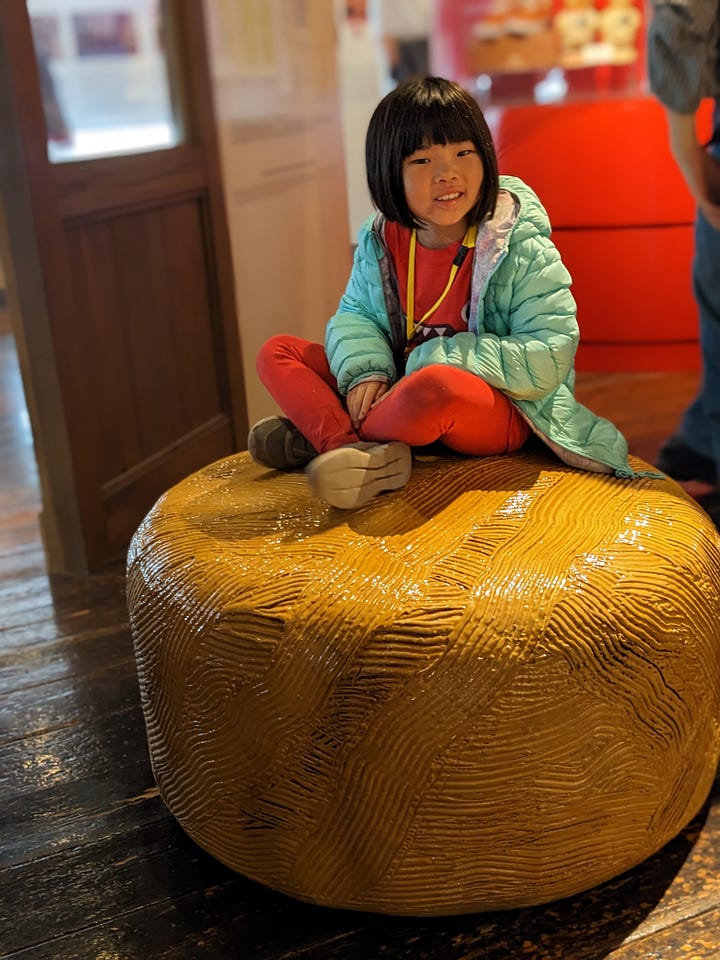
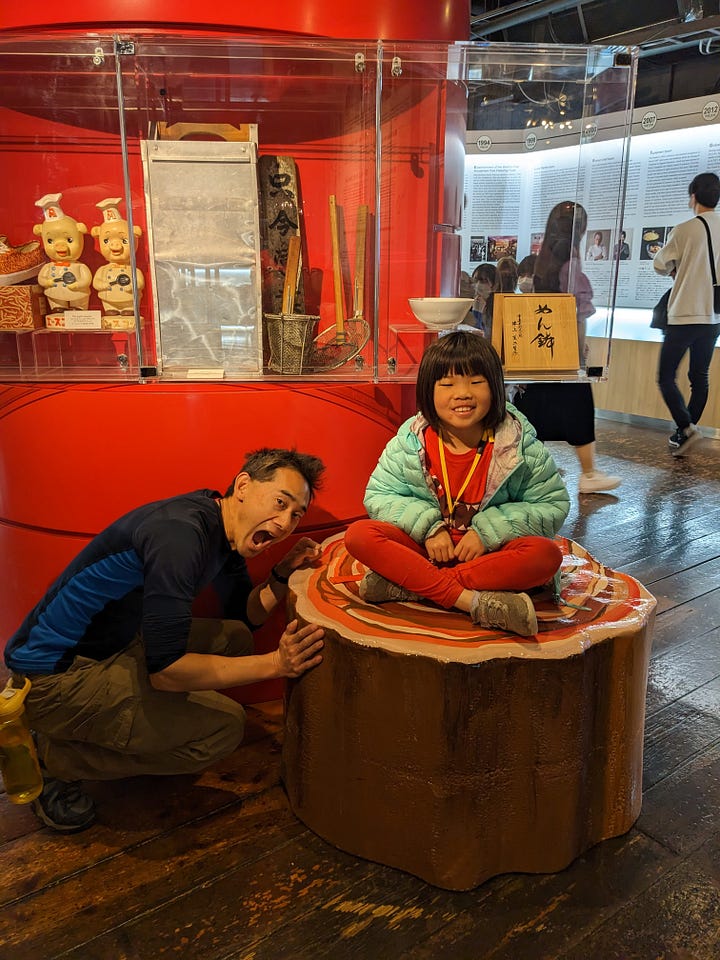
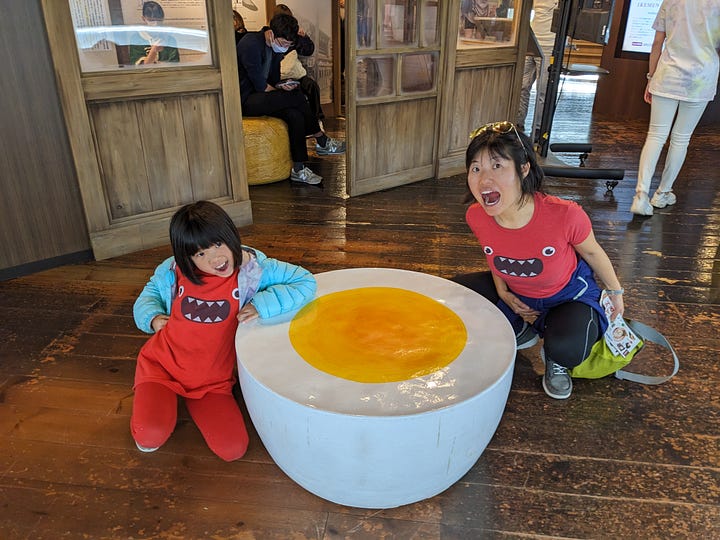
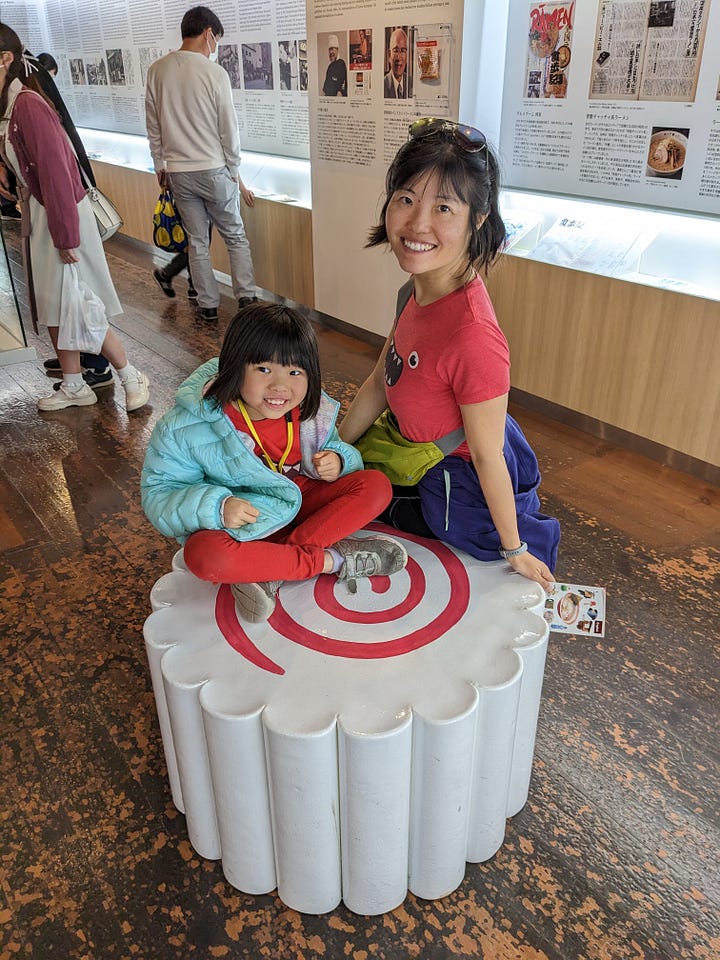
Mostly we enjoyed sitting on giant bamboo, naruto, egg, chashu and noodles and taking pictures in front of all the cool scenes, like the first ramen shop in Japan.
Well, finally we got to eat, and after all that reading about ramen, we were super hungry. As is tradition, we ordered on a machine, went inside, and chowed down. Super yum!
After that, we went to the fun port area which has lots of malls, an amusement park, and the Cup of Noodles Museum.
This visit was a great compliment to the Ramen Museum as this was all about the invention of instant noodles. Ramen was already hugely popular in Japan, but it was hard for Japanese people to have food easily available (remember those long ramen lines?) Momofuku Ando worked for years on this before discovering that deep frying noodles would remove all the moisture and allow for quick and easy rehydration.
What followed was an international boom in CPG (consumer packaged goods) and the birth of Nissen, Top Ramen, and all the brands you know and love. It was interesting that the Cup part of Cup O Noodles was inspired by a visit to the US where Momofuku saw Americans eating food on the street and drinking from paper cups (remember, in Japan, people don’t eat on the street). It was also after this that Japan imported the idea of convenience stores (such as 7-11) and turned them into the ubiquitous staples of the Japanese city.
Afterwards, we headed over the the Gundam Factory. I’m not a specific fan of Gundam, but I’ve watched a lot of other giant robot anime (anyone remember Robotech?) And as an engineer who has worked on robotics, it was fascinating to see the world’s largest moving “robot” and the exhibits on how it was constructed. At six stories tall, the robot is impressive. But it demonstrates the challenge of volumetric scaling very well. Simply put, weight scales at the cube of length. That means a robot that is 12x taller than a human-sized will weigh 1728x more. So imagine this thing has two elephants in each palm. It moves SLOWLY. The video below is sped up 5x. The exhibit also had a really cool human sized robot that continuously assembled little gundam miniature figures. Very fun.
By the time we had dinner, it was getting pretty late, and lots of restaurants were closing. That is, except for Kura Sushi, a conveyor belt sushi restaurant where the waiting line/mob had taken over a whole floor of a mall. The wait was totally worth it.
It is possible to eat at Kura Sushi without interacting with a single person. To get in line, you put your info in a kiosk and take a ticket. Screens indicate when your number is ready. Then you scan your ticket at a machine and get a table number which you walk to yourself. All utensils are at the table. Dishes of nigiri drift by on the conveyor belt constantly, from salmon and egg to beef, pork belly and squid. You just grab what you want. The sushi quality and variety is excellent, especially the seared salmon nigiri. Mama Bear was very happy.
You can also order on a tablet if there’s something you want that isn’t coming by on the conveyor belt. Then a super fast conveyer belt above the other one zips your order to your table and bugs you to grab it (so that the belt can be free to deliver to someone else). At the end of your meal, you insert the empty plates into a hole in the table, and the machine calculates your bill. For every five plates, you get a little animation on the tablet, and a box above your table drops a little capsule/toy onto your table!
Then you take the receipt to the front and pay at one of the machines. We’ve learned that the machines in convenience stores and here are magic. You can throw in all your bills at once and all your coins, and the machine will figure it out and give you the proper change.
Of course you can pay credit as well. And the total bill was only like $30! There is a Kura Sushi in the US which charges $3.60 a plate. In Yokohama, it’s 115 yen or about 86 cents. Yep, you heard that right, 86 cents. Mama Bear is already planning to come live in Japan for a few months and we’ll have to live right next to a Kura Sushi.


